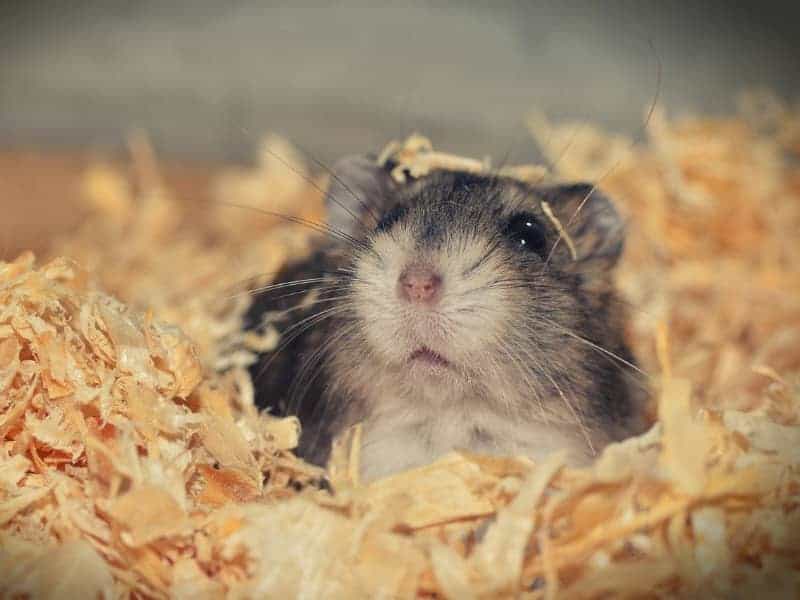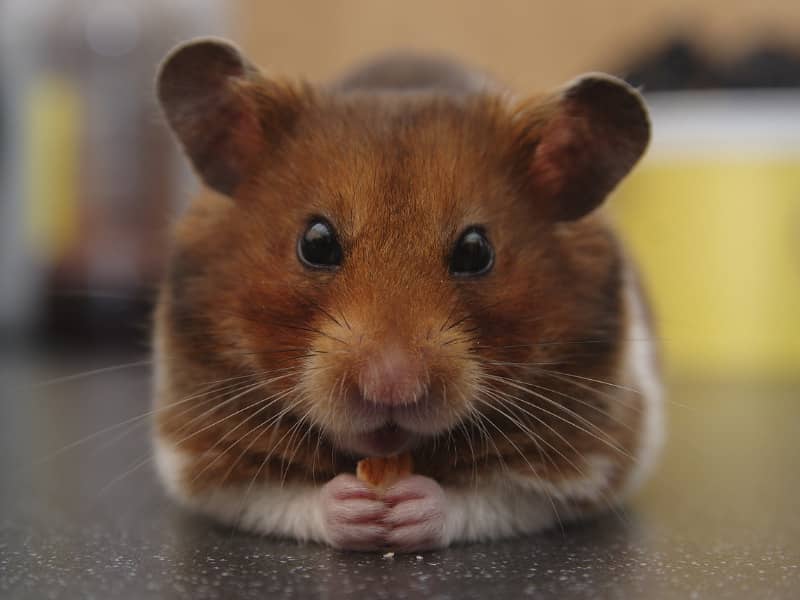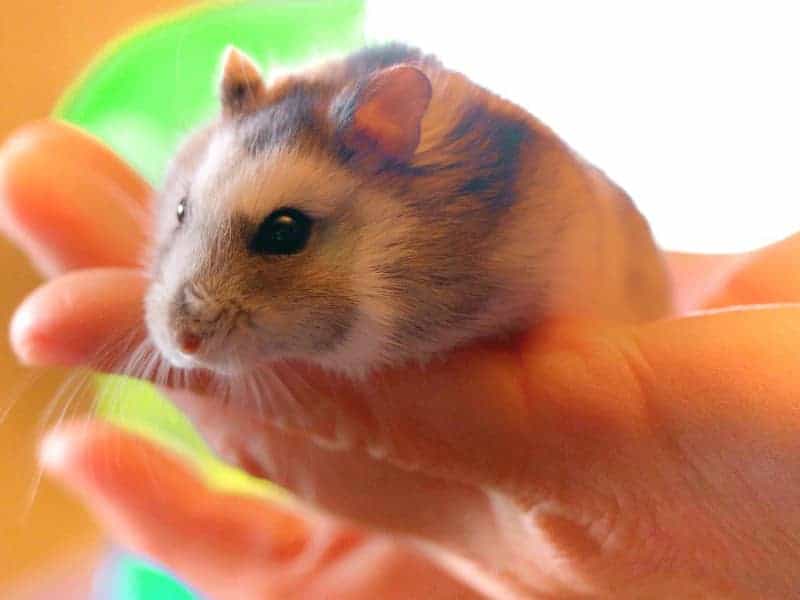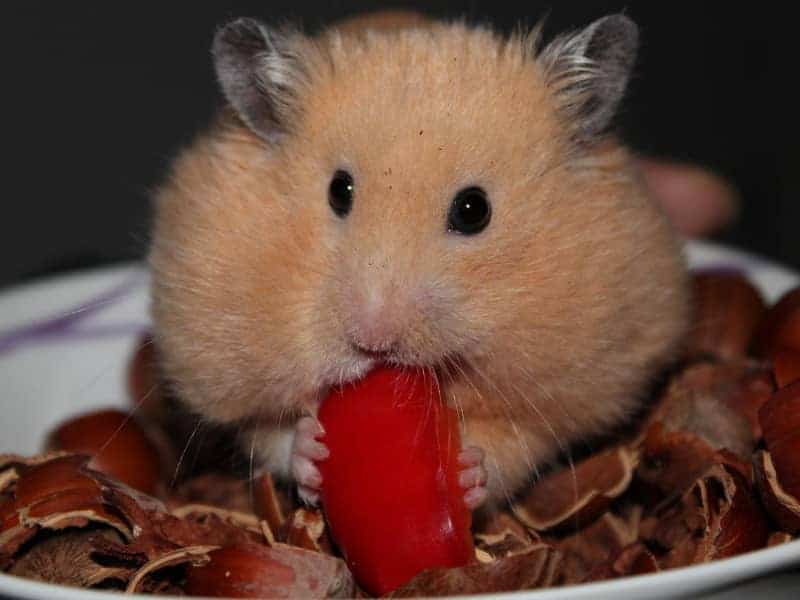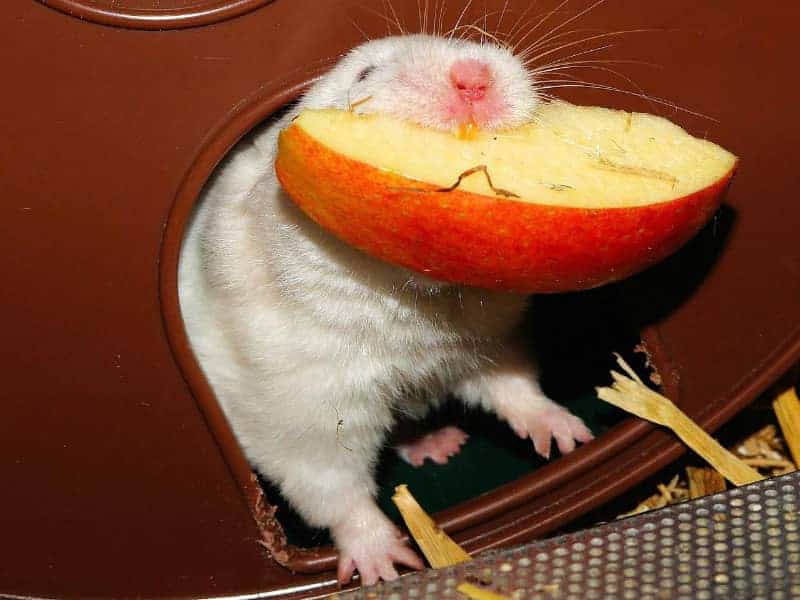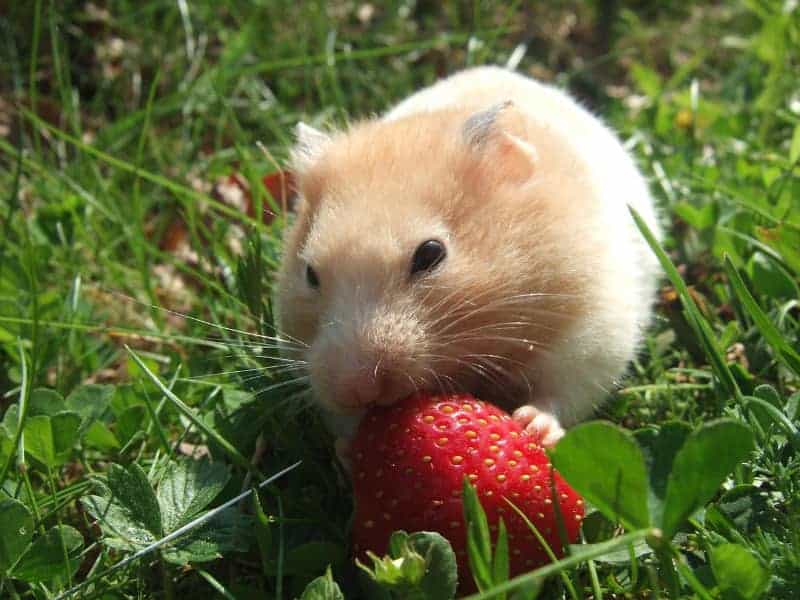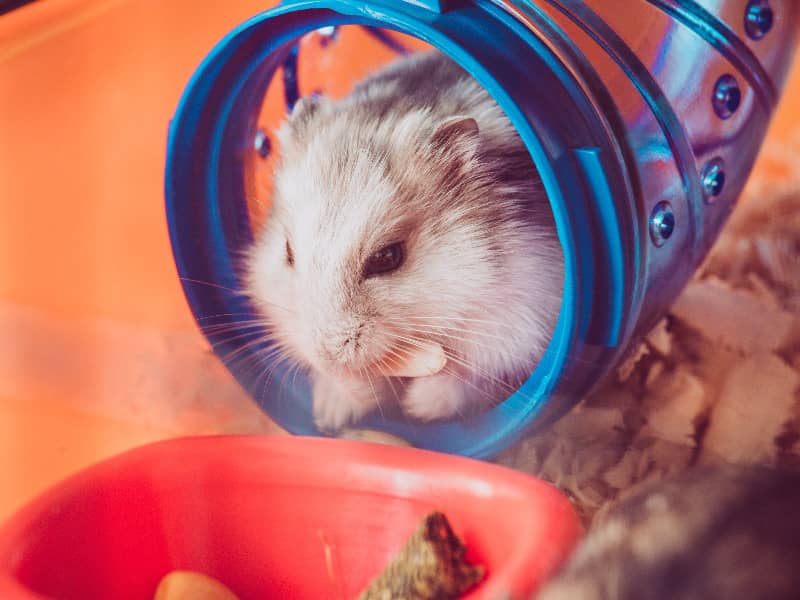
Hamster tube system
Hamsters are naturally curious and active animals. A hamster tube system in their cage can allow them to act out their natural instincts. It not only encourages physical activity, but also stimulates the hamster's mind.
- Hamster tube system
- Hamster tube system - importance for well-being
- Types of hamster tube systems
- Hamster tube system - structure and design
- Hamster tube system - care and maintenance
- Conclusion: Hamster tube system
- Frequently Asked Questions (FAQ)
- Which material is best suited for a hamster tube system?
- How often should I clean the tube system?
- Can I combine a commercial and a customized system?
- My hamster is not using the tube system. What can I do?
- How large should the tube system be in relation to the cage?
- Is there a maximum length or number of tubes I should use?
Hamster tube system - importance for well-being
A tube system is more than just a toy or a nice addition to the cage. It plays a crucial role in the well-being of your hamster. In the wild, hamsters live in complex tunnels that they dig themselves. These tunnels offer them protection from predators and serve as a pantry for food supplies.
A well-designed tube system in the cage can mimic this natural environment. It gives your hamster the opportunity to hide, explore and actively shape its environment. This not only promotes physical health through exercise, but also mental health through the opportunity for problem solving and exploration.
Simulation of the natural habitat
Simulating the natural habitat is another important aspect that a tube system can offer. Hamsters are naturally curious creatures that like to explore their surroundings. A tube system allows them to act out these natural instincts.
The different levels and branches in the tube system allow the hamster to make decisions about where it wants to go. This promotes its cognitive abilities and keeps it mentally active. Furthermore, the design of the tube system with different materials and textures can provide the hamster with additional sensory experiences that would be missing in a simple cage.
Types of hamster tube systems
Tube systems for hamsters come in different shapes, sizes and materials. Choosing the right system can make a big difference to your hamster's well-being.
Materials and their advantages and disadvantages
Plastic is the most commonly used material for hamster tube systems. It is easy to clean and available in many colors and shapes. But be careful: cheap plastic can easily break or splinter, which can be dangerous for your hamster. High-quality, non-toxic plastic is the better choice.
Wood is another option and offers a more natural environment. However, wood is more difficult to clean and can absorb moisture, which can lead to mold growth. Some woods, such as pine and cedar, can even contain harmful resins.
Metal tubes are robust and durable, but they can get cold and are not as comfortable for the hamster. There is also a risk of the hamster injuring itself on sharp edges.
Commercial vs. individual hamster tube systems
Commercial tube systems are practical and easy to install. They often come in sets with different parts that you can put together as you wish. These systems are usually well thought out and safe for your hamster.
Customized systems offer more flexibility and can be adapted to your hamster's specific needs. You can combine different materials and shapes to create a unique experience for your hamster. But be careful: homemade systems can pose a danger to the hamster if they are not constructed correctly.
Both options have their pros and cons, and the best choice depends on your needs and the needs of your hamster.
Hamster tube system - structure and design
Designing a tube system for your hamster is a creative process that can be both fun and challenging. However, there are some important points you should keep in mind to create a safe and stimulating environment for your little friend.
Planning basics
Careful planning is essential before you start setting up. Think about how much space you have available in the cage or enclosure. The size of the system should be in proportion to the total area. A system that is too large could overwhelm the hamster, while one that is too small will not provide enough stimulation.
Sketch a rough plan on paper and try to find a balance between open spaces and hidden corners. This allows the hamster to choose whether it wants to hide or explore depending on its mood.
Tips for a safe hamster tube system
Safety comes first. Make sure that all parts of the tube system are firmly connected to each other to prevent them from falling apart. Avoid sharp edges or small parts that could be swallowed.
Variety is important to stimulate the hamster. Incorporate different heights and levels into the system. You can also use different materials for the tubes to give the hamster different sensory experiences.
Another tip is to use "dead ends" or small chambers where the hamster can rest or hide food. These elements encourage the hamster's natural behavior and make the tube system an exciting and comfortable environment.
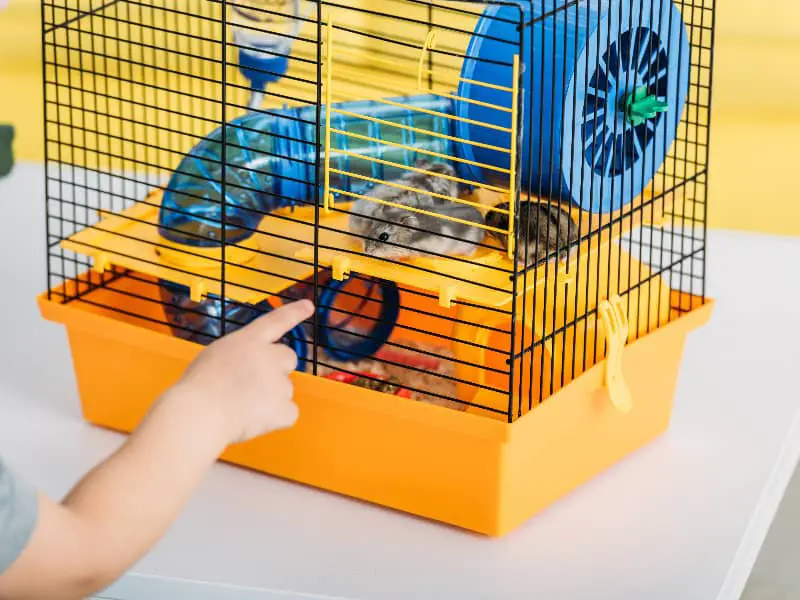
Hamster tube system - care and maintenance
A tube system for your hamster is not just a one-off investment of time and money. It also requires regular care and maintenance to ensure that it remains a safe and healthy place for your little friend.
Cleaning and disinfection
Cleaning is an essential part of maintaining a pipe system. Depending on the material, this can be easier or more complicated. Plastic tubes are generally the easiest to clean. A mild detergent and warm water are often sufficient. Be sure to rinse off any soap residue thoroughly as it can be harmful to hamsters.
Wooden tubes are more difficult to keep clean. They can absorb moisture and odors. In such cases, thorough drying and possibly sanding of the surface may be necessary.
Metal tubes can be cleaned with the same agents as plastic tubes, but make sure they are completely dry to avoid rusting.
Common problems and solutions
As with all animal accessories, problems can also occur with hamster tube systems. A common problem is the loosening of the connections between the tube parts. In such cases, it is important to check all connections regularly and tighten them if necessary.
Another problem could be wear and tear of the material. Wood in particular can become brittle or crack after a while. In such cases, it is best to replace the affected part.
Finally, it's important to keep an eye on your hamster's behavior. If he shows signs of stress or discomfort, this could be an indication that something is wrong with the tube system. In such cases, it is advisable to check the entire system and make adjustments if necessary.
Conclusion: Hamster tube system
A tube system for your hamster is much more than just an entertaining gimmick. It serves as an important component for the well-being and health of your little friend. From choosing the right material to regular care and maintenance, there are many aspects you should consider.
A well-designed and well-maintained tube system allows your hamster to act out its natural instincts and provides a stimulating, safe and comfortable environment. It's an investment that will more than pay off in your hamster's happiness and health.
Frequently Asked Questions (FAQ)
Which material is best suited for a hamster tube system?
Plastic is the easiest to clean and is available in many forms. Wood provides a more natural environment but is more difficult to maintain. Metal is sturdy, but can get cold and is less comfortable for the hamster.
How often should I clean the tube system?
The frequency of cleaning depends on the material and usage. Plastic tubes should be cleaned at least once a week, while wooden tubes should be cleaned less frequently but more thoroughly.
Can I combine a commercial and a customized system?
Yes, you can combine different parts to create a unique tube system. However, make sure that all parts are securely connected to each other.
My hamster is not using the tube system. What can I do?
It may take some time for your hamster to get used to the new system. You can entice him with treats or his favorite food. If he still doesn't use the system after some time, check if there are any problems such as sharp edges or unstable parts.
How large should the tube system be in relation to the cage?
The tube system should not take up the entire cage. There should be enough space for other activities such as eating, drinking and resting.
Is there a maximum length or number of tubes I should use?
There is no strict rule, but it is important not to make the system too complex, as this could overwhelm the hamster. A balance of tubes, open spaces and hiding places is ideal.
Author

-
Garden animal - A life with nature
Welcome to my animal blog! My name is Dirk and I am happy to take you on my journey through the fascinating world of animals and gardening.
Born 54 years ago, I have had an insatiable curiosity for the animal world around me since childhood. Although I have moved professionally in other industries, my true passion has always been animals and nature. It is remarkable how a small garden has become such an important part of my life.
Many of my fondest memories are associated with the animals that share our home. Whether it's the curious squirrels that scurry across the trees in the morning, the colorful variety of birds that visit our feeders, or the busy bees and butterflies that pollinate our flowers, every moment with them is invaluable to me.
This blog is my contribution to share my experiences, discoveries and insights with like-minded people. Here I will share stories of unforgettable encounters with animals, give tips on gardening and creating wildlife-friendly habitats, and take you on my journeys through nature.
Thank you so much for being here!
Cordial,
Dirk aka garden animal
Last posts
- 27. February 2024PetsVeganes Hundefutter – Grün und Gesund?
- 18. January 2024ChickensOregano für Hühner
- November 27, 2023HamsterDiurnal hamsters
- November 24, 2023HamsterHamster hammock

